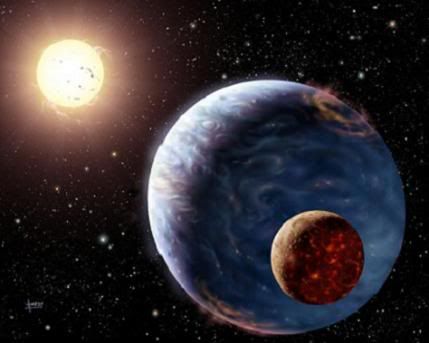Post by glactus on Jan 6, 2010 21:18:03 GMT

An Exoplanet
In their quest to find solar systems analogous to ours, astronomers have determined how common our solar system is. They've concluded that about 15 percent of stars in our galaxy host systems of planets like our own, with several gas giant planets in the outer part of the solar system. "Now we know our place in the universe," said Ohio State University astronomer Scott Gaudi. "Solar systems like our own are not rare, but we're not in the majority, either.".
Gudi says that the gravitational method is especially good in detecting giant planets in solar systems. Planets like our own Jupiter.
This latest MicroFUN result is the culmination of 10 years' work - and one sudden epiphany, explained Gaudi and Andrew Gould, professor of astronomy at Ohio State.
Ten years ago, Gaudi wrote his doctoral thesis on a method for calculating the likelihood that extrasolar planets exist. At the time, he concluded that less than 45 percent of stars could harbor a configuration similar to our own solar system.
"We've only found this one system, and we should have found about six by now - if every star had a solar system like Earth's," Gaudi said.
As to the possibility of life as we know it existing elsewhere in the galaxy, scientists will now be able to make a rough guess based on how many solar systems are like our own.
"With billions of stars out there, even narrowing the odds to 15 percent leaves a few hundred million systems that might be like ours," he said.
Credits: Astronomers at Ohio State University - Scott Gaudi and Andrew Gould.
See more at Spacedaily.com:
www.spacedaily.com/reports/Just_15_Percent_Of_Solar_Systems_Like_Ours_999.html


